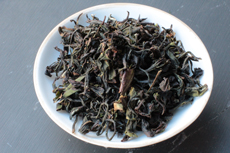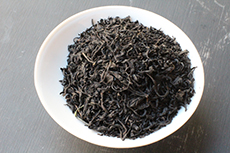.
Search results
Results 1 till 2 of a total of 2 (1 pages).
-
Uroncha
A very beautiful Japanese Oolong from the tea variety Yumewakaba. It has been produced in the manner of Taiwanese ball-shaped Oolongs, but more oxidated and rolled more loosely. Since recently, we find not only the traditional green teas, but also Oolong (Japanese: Uroncha) and black tea (Japanese: Kocha) produced according to Taiwanese and Chinese techniques.The tea plant Yumewakaba has been produced by the tea research and development center Saitama. It is a breeding of Yabukita and a plant close to Yabukita, the Saitama- No. 9. The plant is suited for withering and thus well suited for Oolong and black tea. The tea develops a floral fragrance, sometimes reminding of Osmanthus.Hiruma-san, the tea producer, likes to experiments and is a genuine tea artisan, who does not only knows the various tea plants well, but also develops new production techniques. -
Kocha
A very beautiful Japanese black tea from the tea variety Yumewakaba. It has been produced in the manner of modern Chinese black teas, i.e. as a whole leaf. Since recently, we find not only the traditional green teas, but also Oolong (Japanese: Uroncha) and black tea (Japanese: Kocha) produced according to Taiwanese and Chinese techniques.The tea plant Yumewakaba has been produced by the tea research and development center Saitama. It is a breeding of Yabukita and a plant close to Yabukita, the Saitama- No. 9. The plant is suited for withering and thus well suited for Oolong and black tea. The tea develops a floral fragrance, sometimes reminding of Osmanthus.Hiruma-san, the tea producer, likes to experiments and is a genuine tea artisan, who does not only knows the various tea plants well, but also develops new production techniques.
.









